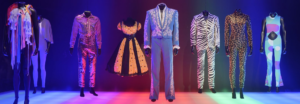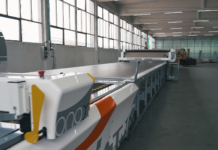 On June 8h, Google presented its latest project «We Wear Culture», a brand new Website that uses Google’s technology to connect fashion lovers to collections and exhibits at museums and other institutions, giving them the ability to not only view a garment, but to zoom in on the hem of a dress, examine a sleeve or a bit of embroidery on a gown up close, wander around an atelier, or sit down with Metropolitan Museum of Art costume restorers.
On June 8h, Google presented its latest project «We Wear Culture», a brand new Website that uses Google’s technology to connect fashion lovers to collections and exhibits at museums and other institutions, giving them the ability to not only view a garment, but to zoom in on the hem of a dress, examine a sleeve or a bit of embroidery on a gown up close, wander around an atelier, or sit down with Metropolitan Museum of Art costume restorers.
The project partners with more 180 cultural institutions from 42 countries, including the Met’s Costume Institute, the Victoria & Albert Museum in London, Japan’s Kyoto Costume Institute, and the Musee des Arts Decoratifs in Paris. It comprises over 400 online exhibitions and stories sharing a total of 30.000 photos, videos and other documents, four virtual reality experiences of iconic fashion pieces, over 700 ultra-high-resolution, so called gigapixel images and over 40 venues offer backstage access on Google Street View.
The site also offers specially curated exhibits. The visitor can click its way to, for example, a curated photo exhibit on Tokyo Street Style, or an exploration of women’s gowns in the 18th century. It is possible to search by designer, or by their muse — examining, say, Marilyn Monroe’s love of Ferragamo stiletto heels, via the Museo Salvatore Ferragamo in Florence, Italy. It is also possible to see how shoemakers, jewellers, tie-dyers and bag-makers master their crafts through generations, turning design sketches and tailoring patterns into clothes everyone can wear. To zoom in made with the Art Camera and see the craftsmanship in unprecedented detail. To step inside the world’s largest costume collection at the Metropolitan Museum of Art’s Costume Institute Conservation Laboratory in 360 degrees, and see what it takes to preserve these objects for future generations. To explore the machinery that keeps one of the largest industries in the world in motion and meet the communities that are built on the production of textiles, like the Avani Society in India.




